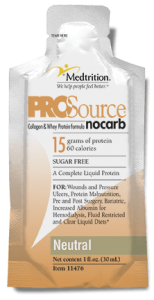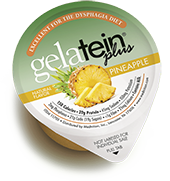Current literature shows that meeting the individual protein and calorie needs of patients is critical in improving outcomes. However, most enteral formulas and oral nutrition supplements are designed to meet “average needs” or a one size fits all approach.

Our customers have let us know that they have more than one type of patient. Medtrition offers the widest variety of protein supplements to help clinicians meet the individual protein needs of all their patients, not just those in the middle.
References
Elke G, Wang M, Weiler N, Day AG, Heyland DK. Close to recommended caloric and protein intake by enteral nutrition is associated with better clinical outcome of critically ill septic patients: secondary analysis of a large international nutrition database. Crit Care 2014;18:R29. http://dx.doi.org/10.1186/cc13720.
Weijs PJM, Stapel SN, de Groot SDW, Driessen DH, de Jong E, Girbes ARJ, et al. Optimal protein and energy nutrition decreases mortality in mechanically ventilated, critically ill patients: a prospective observational cohort study. JPEN 2012;36:60-8.

Macias W, Alaka K, Murphy M, Miller M, Clark W, Mueller B. Impact of the nutritional regimen on protein catabolism and nitrogen balance in patients with acute renal failure. J Parentr Enter Nutr 1996;20:56-62.
Choudry H, Pan M, Karinch A, Souba W. Branched-chain amino acids: metabolism, physiological function, and application. J Nutr 2006;136:314S-8S.
McClave SASPEN. Board of directors and the American college of critical care Medicine. guidelines for the provision and assessment of nutrition support therapy in the adult critically ill patient: Society of Critical Care Medicine (SCCM) and American Society for Parenteral
and Enteral Nutrition (A.S.P.E.N.). JPEN 2016;40(2):159-211.
IOM (Institute of Medicine, Food and Nutrition Board). Dietary reference intakes: energy, carbohydrate, fiber, fat, fatty acids, cholesterol, protein and amino acids (Macronutrients). Washington DC: National Academy Press;2005.
Soeters P, van de Poll M, van Gemert W, Dejong C. Amino acid adequacy in pathophysiological states. J Nutr 2004;134:1575S-82S.
Dickerson RN, Medling TL, Smith AC, Maish GO, Croce MA, Minard G, et al. Hypocaloric, high-Protein nutrition therapy in older vs younger critically ill patients with obesity. J Parentr Enter Nutr 2013;37:342-51.
Taylor SJ. 4.4.7 in: nutrition support. Bristol: Silhouette; 2012. ISBN: 978-0-9574558-0-1 nss.info@talktalk.net.
Hamwi G. Therapy: changing dietary concepts. In: diabetes mellitus: diagnosis and treatment. In: Danowski T, editor. American Diabetes Association, 1;1964. p. 73-8 [New York].
Weijs Pl, Sauerwein HP, Kondrup I. Protein recommendations in the ICU: g protein/kg body weight which body weight for underweight and obese patients? Clin Nutr 2012;31:774e5.
Oudemans-van Straaten HM, Ostermann M. Bench-to-bedside review: citrate for continuous renal replacement therapy, from science to practice. Crit Care 2012;16:249.
Hoffer lj, Bistrian BR. Why Critically Ill Patients Are Protein Deprived JPEN 2013;37(3): 300-309.